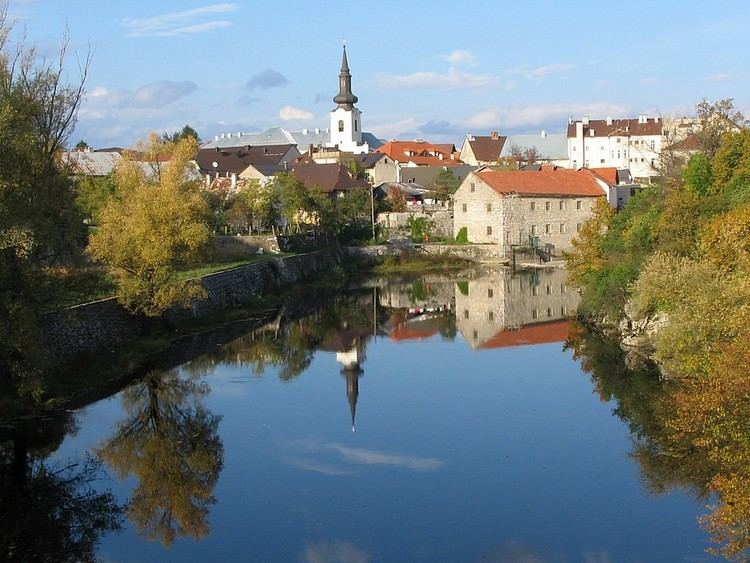Elevation 656 m (2,152 ft) Postal code 53 000 Local time Friday 10:47 AM | Time zone CET (UTC+01) Vehicle registration GS Area code 053 | |
 | ||
Weather 11°C, Wind SW at 5 km/h, 43% Humidity University Veleučilište „Nikola Tesla“ u Gospiću | ||
Gospić ([ɡǒːspitɕ]) is a town and municipality in the mountainous and sparsely populated region of Lika, Croatia. It is the administrative centre of Lika-Senj county. Gospić is located near the Lika River in the middle of a karst field.
Contents
Map of Gospi%C4%87, Croatia
Gospić is the third smallest seat of a county government in Croatia. Its status as the county capital helped to spur some development in it, but the town as well as the entire region have suffered a constant decrease in population over the last several decades. Gospić is notable for being the birthplace of Nikola Tesla.
History
The first organised inhabitation of the area was recorded in 1263 as Kaseg or Kasezi. The name Gospić is first mentioned in 1604, which likely originates from the Croatian word for "lady" (gospa) or another archaic form, gospava. It was ruled by Ottoman Empire as part of Sanjak of Lika initially in Rumeli Eyalet (1528–1580), laterly in Bosnia Eyalet (1580–1686).
Today's town was built around two Ottoman forts (the towers of Aga Senković and of Aga Alić). The Turkish incursion was repelled by the end of the 17th century and Gospić became an administrative centre of the Lika region within the Military Frontier.
Until 1918, Gospić (named GOSPICH before 1850) was part of the Austrian monarchy (Kingdom of Croatia-Slavonia after the compromise of 1867), in the Croatian Military Frontier, Likaner Regiment N° I. In the late 19th century and early 20th century, Gospić was part of the Lika-Krbava County of the Kingdom of Croatia-Slavonia.
In the 1990s, during the course of the Croatian War of Independence, Gospić suffered greatly during the Battle of Gospić. The town was held by Croatian government forces throughout the war, while the rebel Serb forces of the Republic of Serbian Krajina occupied positions directly to the east and often bombarded the town from there. Control of the area finally devolved to the Croatian government with the success of Operation Storm in August 1995.
Gospic is also the site of one of the regional branches of the Croatian State Archives, the Državni arhiv Gospić, at Kaniška 17. It was founded 30 September 1999 and officially opened 1 September 2000 in a renovated building and now houses historical documents of relevance to the Lika-Senj region which were formerly housed in the Regional Archive at Karlovac.
People
The municipality was the birthplace of such great men as the serb physicist and engineer Nikola Tesla (in Smiljan), pioneer in telegraphy Ferdinand Kovačević and also national thinkers like Ante Starčević.
Climate
Gospić has a humid continental climate, Dfb by Köppen climate classification, with mean temperatures varying from −0.9 °C (30.4 °F) in January to 18.1 °C (64.6 °F) in July. Being situated higher than 500 metres (1,640 ft) above sea level, the area experiences high diurnal ranges, especially in summer, and frost has been recorded in every month except for July. The record low and high temperatures are −33.5 °C (−28.3 °F) and 38.7 °C (101.7 °F), respectively. Gospić is also quite a rainy city, with a slight summer minimum, but it experiences plentiful precipitation all year long, with the maximum being in autumn. During winter, Gospić can get strong blizzards, with on average 5.1 days a year when more than 50 cm (20 in) falls, and 16.1 days when more than 30 cm (12 in) falls. Its record snow cover was 285 cm (112.2 in), and it was measured in February 1916.
